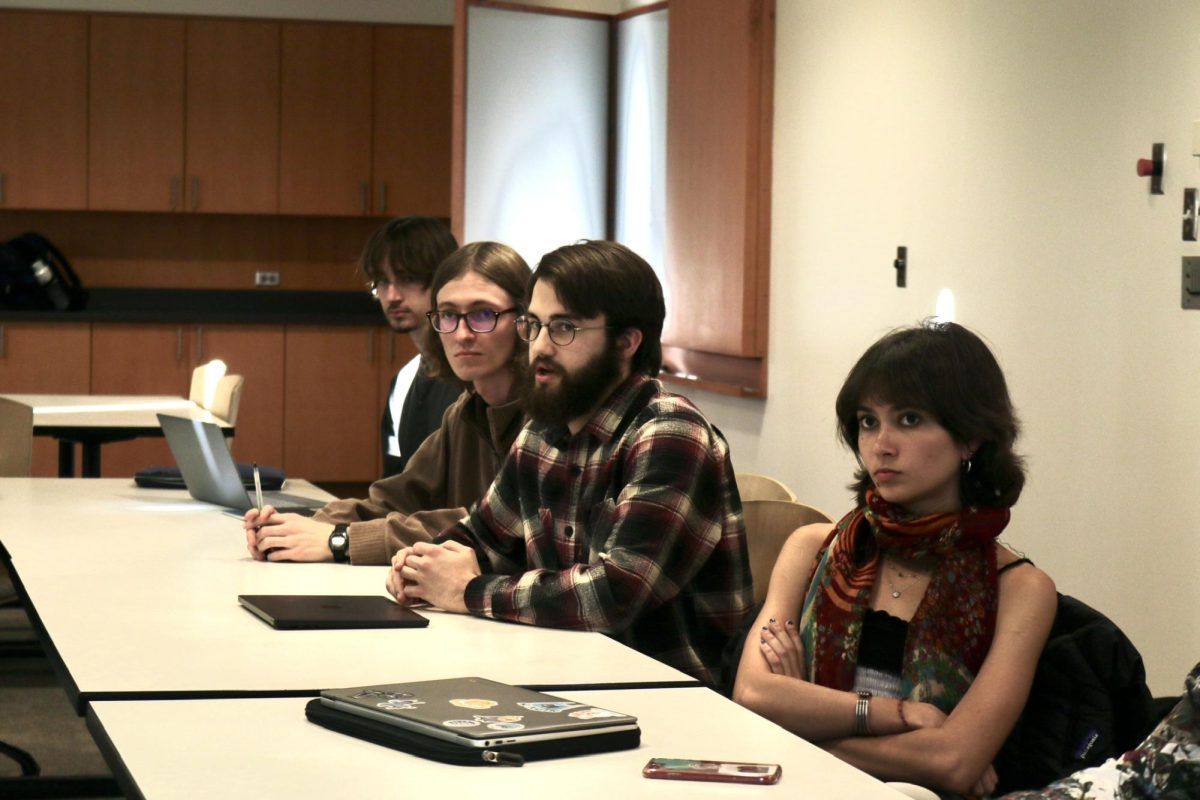Dozens of Grinnell College students generously donate at blood drives throughout the academic year. A new procedure, coming to the College for the first time, will offer students another opportunity to save lives.
Jessica Reidies ’09 is organizing a campus marrow donation drive for this coming Wednesday, April 8. At the drive, which will take place from 9 a.m. to 3 p.m. in JRC 101, students will register for a national registry of marrow donors.
According to Reidies, such a drive is a first for Grinnell College. Marrow drives are becoming more common on college campuses, which have become excellent sources for registering potential donors. “The 20-something demographic is a fairly philanthropic age,” Reidies said.
The registration is a 15-minute procedure, according to Colleen Chapleau, associate director of the Iowa Marrow Donor Program. Students fill out paperwork and swab their cheeks. “We need to get a DNA sample from [the registrants],” Chapleau said, in order to determine if their marrow matches a recipient’s.
“Of all the people who join the registry, less than two percent will actually match a patient in need,” Chapleau said. “The chances are small that any one particular person who joins will go on to donate.”
According to the National Marrow Donor Program, every day thousands of patients search for a life-saving bone marrow transplant. 30 percent of these patients find donors within their families, while the other 70 percent must search outside their families for a matching tissue type.
For Ragnar Thorisson ’11, bone marrow donation has an especially personal significance.
Diagnosed with Leukemia at 14, Thorisson went through three rounds of chemotherapy before doctors concluded his cancer was resistant to the treatment.
“I needed a bone marrow transplant to become healthy again,” Thorisson said.
Fortunately, Thorisson’s brother was a match, and he was able to receive a transplant. “I was very lucky in that case,” Thorisson said. “Having the means of a good match for the bone marrow is especially important to avoid complications post-transplant.”
Unlike blood donations, the requirements for a donor-recipient match are more stringent and exclusive, and results of a mismatch can be dangerous. Complications include the potentially fatal Graft vs. Host disease, in which the body rejects a poorly matched transplant.
Reidies became interested in marrow donation when she noticed an ad on a Native American website she was researching. “It’s more likely to find a match within [one’s] ethnic group,” Reidies said. “There’s a critical need for ethnic minority donors.”
The actual donation process can be done in two ways. One, the traditional bone marrow procedure, involves a simple outpatient procedure, performed under anesthesia. Donors are sore after the procedure and must rest for 2 to 3 days. “Most people donate Thursday or Friday, and are back to their routine by Monday,” Chapleau said.
Another, newer method, called Peripheral Blood Stem Cell (PBSC) donation, uses a drug to stimulate stem cell production and removes stem cells from the blood through apheresis, which separates red blood cells from the marrow needed for the donor. At the end of the procedure, the red blood cells are returned to the donor, causing less complications than the traditional method.
“The people who donated for us tell us that the experience for them wasn’t the physical experience,” Chapleau said. “It was the
emotional experience in knowing they got to play such an important part in an effort to save somebody’s life.”




















































